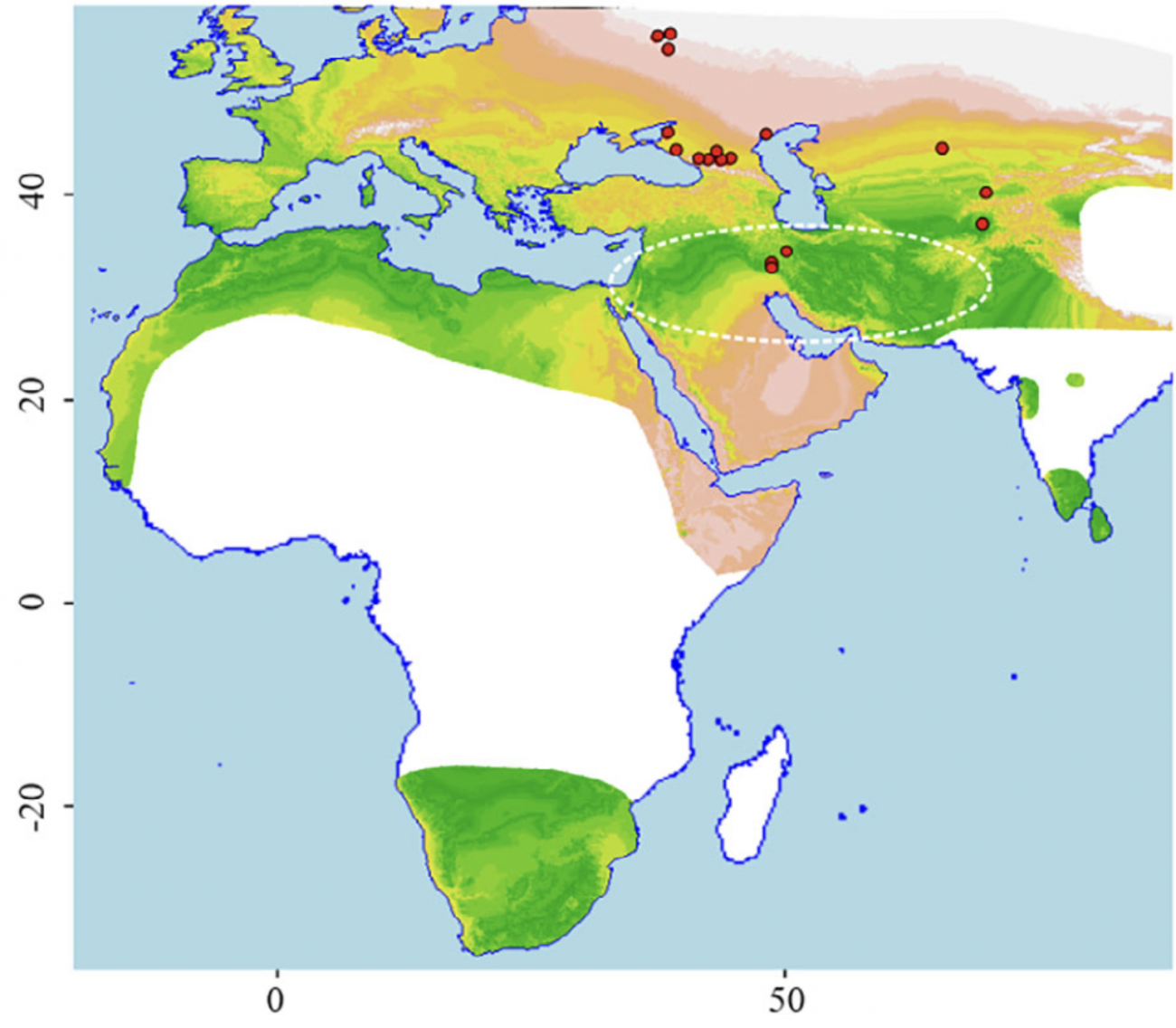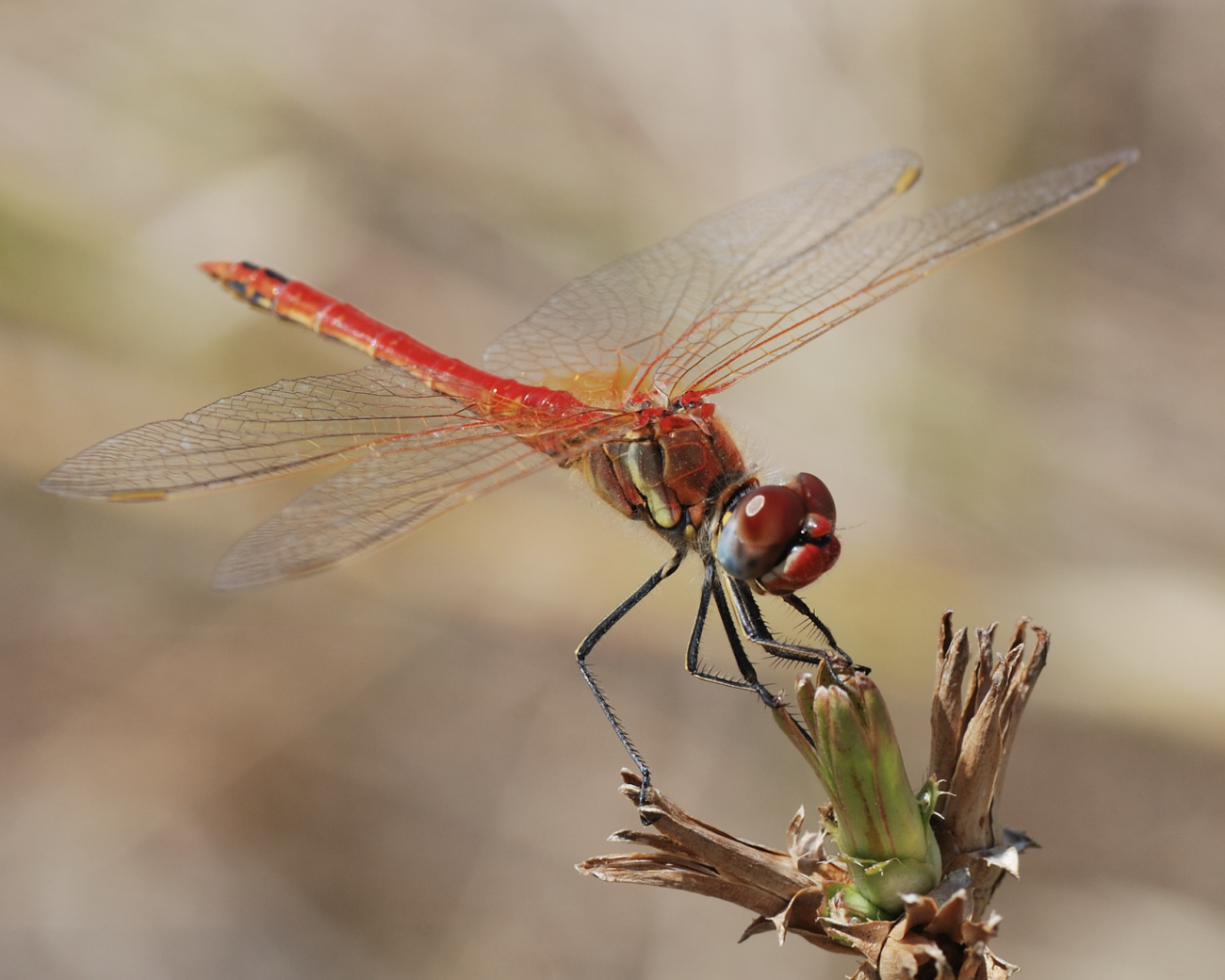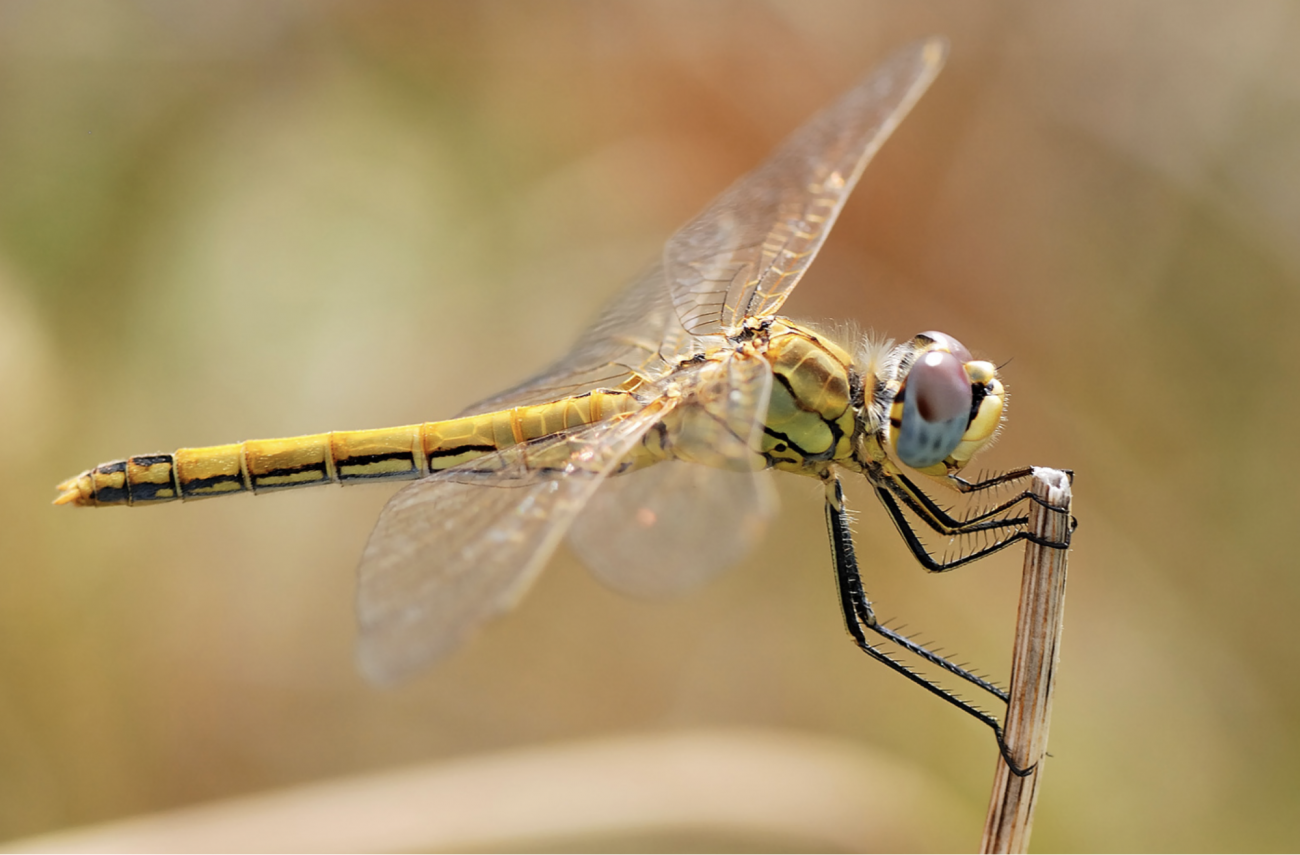
Relatively recently it became clear that there are no fewer migratory insects than migratory birds – not only in the number of individuals (which would not be surprising), but also in biomass. Among migratory insects, butterflies and dragonflies are the most well-known, but their migration routes have been poorly studied so far. It is difficult to attach a radio transmitter to an insect, and ringing (or other marking) does not promise success, since many species have a migration cycle of several generations.

One of the migratory species of dragonflies, Sympetrum fonscolombii (Red-veined Darter dragonfly), cannot winter in European Russia and appears here only in spring or early summer. Where the adult individuals fly from remained unknown. To solve this issue, researchers from the Institute of Animal Taxonomy and Ecology of the Siberian Branch of the Russian Academy of Sciences, Moscow Zoo, All-Russian State Center for Quality and Standardization of Animal Medicines and Feed, and the A.N. Severtsov Institute of Ecology and Evolution of the Russian Academy of Sciences (IEE RAS) used an analysis of the isotopic composition of hydrogen in the wings of dragonflies. The isotopic composition of hydrogen (the δ2H value) in the wings corresponds to the δ2H of water in the habitat of the larvae.

“Based on the global geostatistical model of the δ2H value in atmospheric precipitation and taking into account the distribution of S. fonscolombii, the most probable area of origin of immigrants arriving in the European part of Russia is in Southwest Asia, and the migration distance can reach 2000–4000 km,” said A.V. Tiunov, Doctor of Biological Sciences, Corresponding Member of the Russian Academy of Sciences, Deputy Director for Science at the IEE RAS.
The work was published in the journal Ecological Entomology: Borisov A.S., Borisov S.N., Iakovlev I.K., Onishko V.V., Ganin M.Yu., Tsurikov S.M., Tiunov A.V. (2024) Origin of the Red-veined Darter dragonflies migrating into the European part of Russia revealed by stable isotopes of hydrogen. Ecological Entomology, 49: 974-978.
